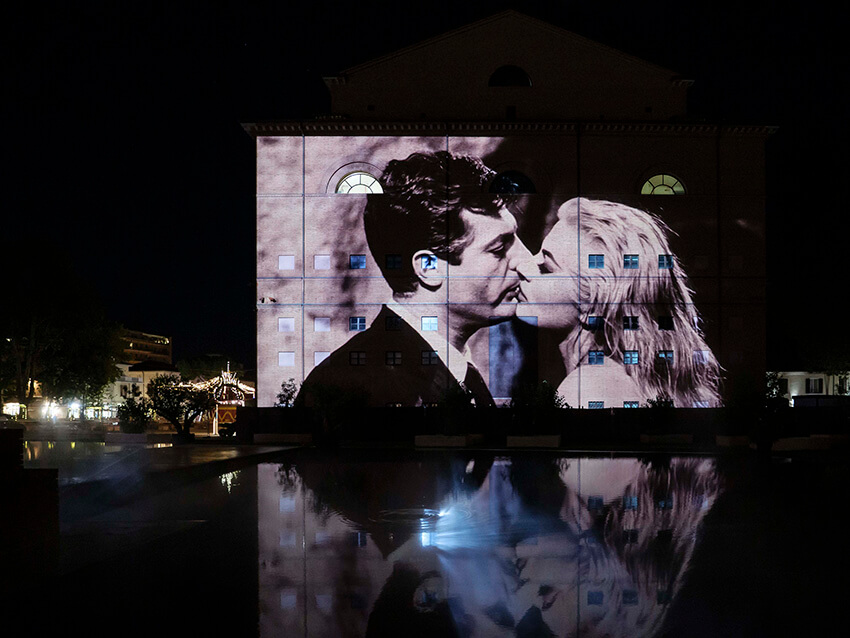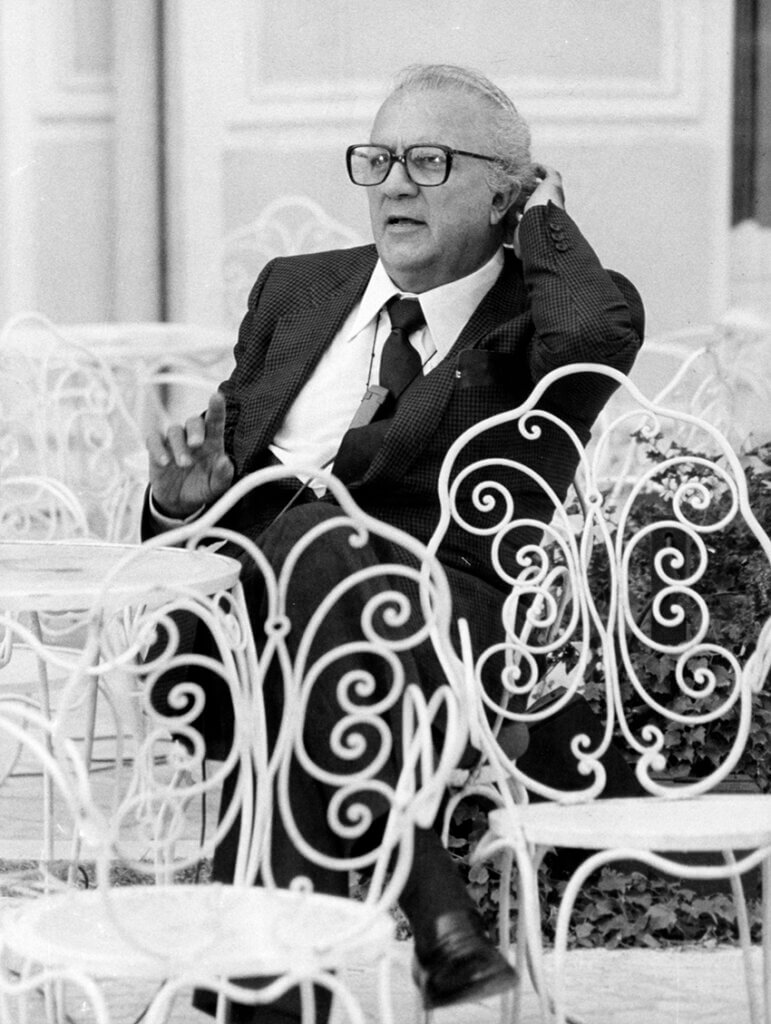In August, the long-awaited Fellini-Museum opened in Rimini at three distinctive locations in the historic old town: Castel Sismondo, Palazzo del Fulgor and Piazza Malatesta.
Fellini and Rimini

Those who are old enough may remember: the racing cars of the Mille Miglia rally speeding across the 2,000-year-old Tiberius Bridge. The snowball fight at the Pigna Fountain and the scene with the peacock. The clumsy seduction attempt at the Cinema Fulgor. And, of course, the fairy-tale Grand Hotel, site of glamorous parties watched clandestinely through the bushes by local youth. “We spied the naked backs of women who appeared like gold, embraced by the arms of men in white tuxedos,” Federico Fellini wrote years later in his book “La mia Rimini” (My Rimini). The world-famous director was born in Rimini in 1920 and later returned again and again to his native city from his adopted home of Rome.
Cultural heritage
The Fellini Museum Rimini is now open in the hometown of the famous filmmaker. The diffuse museum center is the largest museum project in the world dedicated to the genius behind cult films such as La Strada, Amarcord or La Dolce Vita. A magical place that arouses emotions and where innovation, research and experimentation compete with the classic rules of art. The aim is not to present Fellini’s cinematographic work as a whole. Nor is it a tribute to the director, who died in 1993. Rather, the intention is to enhance the cultural legacy of the great filmmaker in the history of cinema and to condense the city, which plays such an important role in many of his films, into a spatial and conceptual tour. The visitor will be offered an immersive experience, a seamless transition of thoughts and places, of interior and exterior spaces, of participatory narratives and dialogues that make Rimini the starting point of an imaginary journey and the key to a world where everything is imaginable.

Historic old town
The museum unfolds around three central points in the historic seaside resort’s old town: Castel Sismondo, a 15th-century fortress designed by Filippo Brunelleschi; Palazzo del Fulgor, an 18th-century building. Its first floor houses the legendary Cinema Fulgor, immortalized in Amarcord and renovated by three-time Oscar winner Dante Ferretti; Piazza Malatesta, a large, partially landscaped area with venues and art installations. The huge water curtain recalls the ancient moat and a large circular bench is remembered, as in the finale of 8½ as an anthem, to life, solidarity and the desire for community.
In its new design, Piazza Malatesta looks like a spacious square of dreams. A ring, not only symbolic, encloses the cultural heart of Rimini with the Fellini Museum, the Teatro Galli inaugurated by Giuseppe Verdi and restored in 2018, and the Center for Contemporary Art PART (Palazzi dell’Arte Rimini) housed in two 14th century palaces. The project is part of a large-scale plan to rehabilitate infrastructure and enhance the cultural and architectural heritage of the city and its historic center.

Fellini-Museum
The new Fellini Museum sees itself as a place of creativity under the sign of Fellini’s visionary spirit. It was included by the Ministry of Culture in the list of the most important projects of national heritage and was presented by the Minister of Culture Dario Franceschini during the Venice International Film Festival, on the Lido of Venice. Rimini’s mayor is proud of the latest major project in his city: “The Fellini Museum has the same importance and significance for Rimini as the Guggenheim Museum has for Bilbao,” comments Rimini Mayor Andrea Gnassi.
Fellini Museum is a dynamic celebration of the highest legacy left by the maestro: the credo “everything is imagined”, capable of restoring everything that the cinema has wanted to be since its start, and that Fellini’s films express perfectly: amazement, imagination, live shows, enjoyment. A museum that can interpret the Rimini director’s cinema, not as a work finalized in itself, but as the key for linking tradition and contemporaneity.
Details and Info at the museum’s webpage

Photos: ArchivioComuneRimini; APT_Servizi_Regione_Emilia_Romagna;



